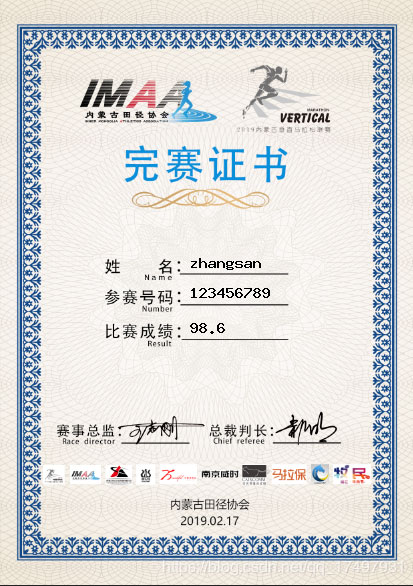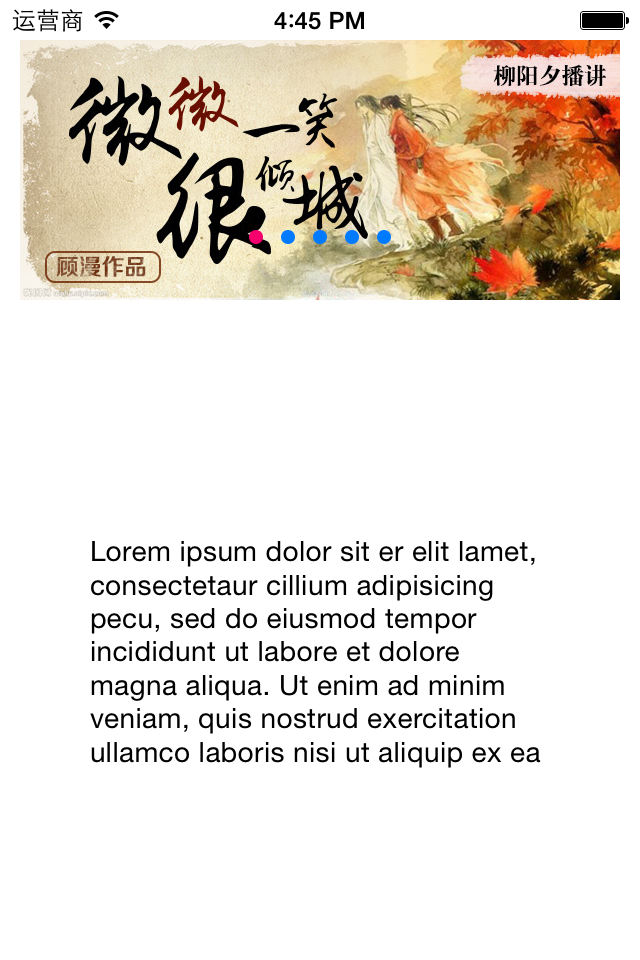1、需求及配置
需求:爬取京东手机搜索页面的信息,记录各手机的名称,价格,评论数等,形成一个可用于实际分析的数据表格。
使用maven项目,log4j记录日志,日志仅导出到控制台。
maven依赖如下(pom.xml)
|
1
2
3
4
5
6
7
8
9
10
11
12
13
14
15
16
17
18
19
20
21
|
<dependencies>
<dependency>
<groupid>org.apache.httpcomponents</groupid>
<artifactid>httpclient</artifactid>
<version>4.5.3</version>
</dependency>
<dependency>
<!-- jsoup html parser library @ https://jsoup.org/ -->
<groupid>org.jsoup</groupid>
<artifactid>jsoup</artifactid>
<version>1.11.2</version>
</dependency>
<!-- https://mvnrepository.com/artifact/log4j/log4j -->
<dependency>
<groupid>log4j</groupid>
<artifactid>log4j</artifactid>
<version>1.2.17</version>
</dependency>
</dependencies>
|
log4j配置(log4j.properties),将info及以上等级信息输出到控制台,不单独设置输出文档。
|
1
2
3
4
5
6
|
log4j.rootlogger=info, console
#console
log4j.appender.console=org.apache.log4j.consoleappender
log4j.appender.console.layout=org.apache.log4j.patternlayout
log4j.appender.console.layout.conversionpattern=%d [%t] %-5p [%c] - %m%n
|
2、需求分析与代码
2.1需求分析
第一步,建立客户端与服务端的连接,并通过url获得网页上的html内容。
第二步,解析html内容,获取需要的元素。
第三步,将html内容输出到本地的文本文档中,可直接通过其他数据分析软件进行分析。
根据以上分析,建立4个类,gethtml(用于获取网站html), parsehtml(用于解析html), writeto(用于输出文档), maincontrol(主控).下面分别对四个类进行说明。为使代码尽量简洁,所有的异常均从方法上直接抛出,不catch。
2.2代码
2.2.1gethtml类
该类包含两个方法:geth(string url), urlcontrol(string baseurl, int page),分别用于获取网页html及控制url。由于此次爬取的网页内容只是京东上某一类商品的搜索结果,所以不需要对页面上所有的url进行遍历,只需要观察翻页时url的变化,推出规律即可。只向外暴露urlcontrol方法,类中设置一个private的log属性:private static logger log = logger.getlogger(gethtml.class); 用于记录日志。
geth(string url),对单个url的html内容进行获取。
urlcontrol(string baseurl, int page),设置循环,访问多个页面的数据。通过审查元素可以看到京东上搜索页page的变化实际是奇数顺序的变化。
再看一下点击后网址的变化,可以发现实际变化的是page属性的值。通过拼接的方式就可以很的容易的获得下一个网页的地址。
https://search.jd.com/search?keyword=%e6%89%8b%e6%9c%ba&enc=utf-8&qrst=1&rt=1&stop=1&vt=2&cid2=653&cid3=655&page=3&s=47&click=0
https://search.jd.com/search?keyword=%e6%89%8b%e6%9c%ba&enc=utf-8&qrst=1&rt=1&stop=1&vt=2&cid2=653&cid3=655&page=5&s=111&click=0
https://search.jd.com/search?keyword=%e6%89%8b%e6%9c%ba&enc=utf-8&qrst=1&rt=1&stop=1&vt=2&cid2=653&cid3=655&page=7&s=162&click=0
整体代码:
|
1
2
3
4
5
6
7
8
9
10
11
12
13
14
15
16
17
18
19
20
21
22
23
24
25
26
27
28
29
30
31
32
33
34
35
36
37
38
39
40
41
42
43
44
45
46
47
48
49
50
51
52
53
54
55
56
57
58
59
|
import java.io.ioexception;
import org.apache.http.httpentity;
import org.apache.http.client.clientprotocolexception;
import org.apache.http.client.methods.closeablehttpresponse;
import org.apache.http.client.methods.httpget;
import org.apache.http.impl.client.closeablehttpclient;
import org.apache.http.impl.client.httpclients;
import org.apache.http.util.entityutils;
import org.apache.log4j.logger;
public class gethtml {
//建立日志
private static logger log = logger.getlogger(gethtml.class);
private static string geth(string url) throws clientprotocolexception, ioexception {
//控制台输出日志,这样每条访问的url都可以在控制台上看到访问情况
log.info("正在解析" + url);
/*
* 以下内容为httpclient建立连接的一般用法
* 使用httpclient建立客户端
* 使用get方法访问指定url
* 获得应答
* */
closeablehttpclient client = httpclients.createdefault();
httpget get = new httpget(url);
closeablehttpresponse response = client.execute(get);
/*
* 以下内容为将html内容转化为string
* 获得应答体
* 将应答体转为string格式,此处使用了entityutils中的tostring方法,编码格式设置为"utf-8"
* 完成后关闭客户端与应答
* */
httpentity entity = response.getentity();
string content;
if (entity != null) {
content = entityutils.tostring(entity, "utf-8");
client.close();
response.close();
return content;
} else
return null;
}
public static void urlcontrol(string baseurl, int page) throws clientprotocolexception, ioexception {
//设置当前页count
int count = 1;
//如果当前页小于想要爬取的页数则执行
while (count < page) {
//实际访问的url为不变的url值拼接上url变化的值
string u = baseurl + (2 * count - 1) + "&click=0";
//此处调用parsehtml类中的方法对url中的html页面进行处理,后面详细介绍该类
string content = parsehtml.parse(geth(u)).tostring();
//此处调用writeto类中的方法对解析出来的内容写入到本地,后面详细介绍该类
writeto.writeto(content);
count++;
}
}
}
|
2.2.2parsehtml类
该步骤需要通过审查元素对需要爬取内容的标签进行确定,再通过jsoup中的css选择器进行获取。
|
1
2
3
4
5
6
7
8
9
10
11
12
13
14
15
16
17
18
19
20
21
22
23
24
25
26
27
28
29
30
31
32
|
import org.jsoup.jsoup;
import org.jsoup.nodes.document;
import org.jsoup.nodes.element;
import org.jsoup.select.elements;
public class parsehtml {
public static stringbuilder parse(string content)
{
//使用jsoup中的parse方法对已经转换为string的html内容进行分析,返回值为document类
document doc = jsoup.parse(content);
//使用选择器select对需要找的元素进行抓取,例如第一个select中选择的是ul标签中class属性等于gl-warp clearfix的内容
elements ele = doc.select("ul[class = gl-warp clearfix]").select("li[class=gl-item]");
//设置一个容器,用于装各个属性
stringbuilder sb = new stringbuilder();
//通过上一个选择器可以获得整个页面中所有符合要求的元素,也即各款手机,下面则需要对每款手机进行遍历,获取其属性
for (element e : ele) {
//此处对各个属性的获取参考了网上一篇爬取京东上内容的文章,应该有其他不同的写法
string id = e.attr("data-pid");
string mingzi = e.select("div[class = p-name p-name-type-2]").select("a").select("em").text();
string jiage = e.select("div[class=p-price]").select("strong").select("i").text();
string pinglun = e.select("div[class=p-commit]").select("strong").select("a").text();
//向容器中添加属性
sb.append(id+"\\t");
sb.append(mingzi+"\\t");
sb.append(jiage+"\\t");
sb.append(pinglun+"\\t");
sb.append("\\r\\n");
}
return sb;
}
}
|
2.2.3writeto类
此类中的方法将解析完成的内容写入到一个本地文件中。只是简单的io。
|
1
2
3
4
5
6
7
8
9
10
11
12
13
14
15
16
|
import java.io.bufferedwriter;
import java.io.file;
import java.io.filewriter;
import java.io.ioexception;
public class writeto {
// 设置文件存放的位置
private static file f = new file("c:\\\\jingdong.txt");
public static void writeto(string content) throws ioexception {
//使用续写的方式,以免覆盖前面写入的内容
bufferedwriter bw = new bufferedwriter(new filewriter(f, true));
bw.append(content);
bw.flush();
bw.close();
}
}
|
2.2.4maincontrol类
主控程序,写入基地址与想要获取的页面数。调用gethtml类中的urlcontrol方法对页面进行抓取。
|
1
2
3
4
5
6
7
8
9
10
11
12
|
import java.io.ioexception;
import org.apache.http.client.clientprotocolexception;
public class maincontrol {
public static void main(string[] args) throws clientprotocolexception, ioexception {
// todo auto-generated method stub
string baseurl = "https://search.jd.com/search?keyword=%e6%89%8b%e6%9c%ba&enc="
+ "utf-8&qrst=1&rt=1&stop=1&vt=2&cid2=653&cid3=655&page=";
int page = 5;//设置爬取页数
gethtml.urlcontrol(baseurl, page);
}
}
|
3、爬取结果
爬取20页。
3.1控制台输出
3.2文档输出
可以直接使用excel打开,分隔符为制表符。列分别为商品编号,名称,价格与评论数。
4、小结
此次爬取使用了httpclient与jsoup,可以看到对于简单的需求,这些工具还是非常高效的。实际上也可以把所有类写到一个类当中,写多个类的方式思路比较清晰。
以上这篇java爬虫实现爬取京东上的手机搜索页面 httpcliient+jsoup就是小编分享给大家的全部内容了,希望能给大家一个参考,也希望大家多多支持快网idc。
原文链接:http://www.cnblogs.com/pandasgb/archive/2017/11/30/7920323.html
相关文章
- ASP.NET自助建站系统中的用户注册和登录功能定制方法 2025-06-10
- ASP.NET自助建站系统的域名绑定与解析教程 2025-06-10
- 个人服务器网站搭建:如何选择合适的服务器提供商? 2025-06-10
- ASP.NET自助建站系统中如何实现多语言支持? 2025-06-10
- 64M VPS建站:如何选择最适合的网站建设平台? 2025-06-10
- 2025-07-10 怎样使用阿里云的安全工具进行服务器漏洞扫描和修复?
- 2025-07-10 怎样使用命令行工具优化Linux云服务器的Ping性能?
- 2025-07-10 怎样使用Xshell连接华为云服务器,实现高效远程管理?
- 2025-07-10 怎样利用云服务器D盘搭建稳定、高效的网站托管环境?
- 2025-07-10 怎样使用阿里云的安全组功能来增强服务器防火墙的安全性?
快网idc优惠网
QQ交流群
-
2025-05-25 102
-
PHP图像处理 imagestring添加图片水印与文字水印操作示例
2025-05-29 36 -
2025-05-27 41
-
2025-05-27 80
-
iOS开发中使用UIScrollView实现图片轮播和点击加载
2025-05-29 22
















